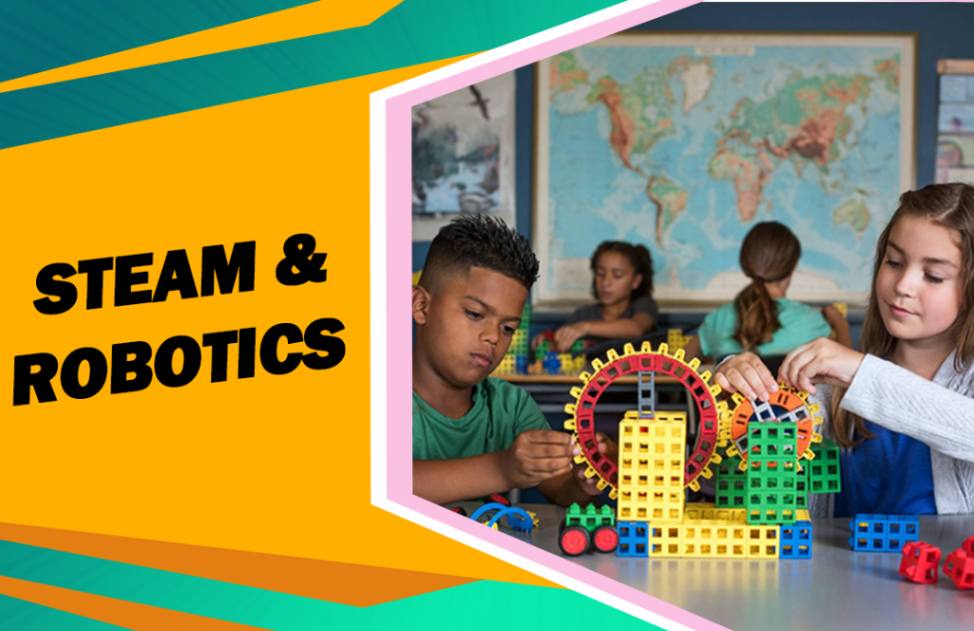Stem Based Learning for Students
STEM-based learning has become increasingly important in education in recent years. Science, Technology, Engineering, and Mathematics, or STEM for short, is a multidisciplinary approach to education that combines these four subjects coherently and practically. STEM-based learning integrates courses that solve actual world problems and develop critical thinking abilities, rather than merely teaching them separately. Let’s look advantages of Stem-based learning for students and successful implementation strategies in educational settings. STEM-Based Learning: What Is It? An educational strategy known as STEM-based learning highlights how the four fields of science, technology, engineering, and mathematics are interrelated. STEM-based learning for students makes it possible for students to recognize the links between these courses and apply their knowledge in real-world, practical situations, as opposed to teaching them separately. The goal of STEM-based education is to provide students with the knowledge and abilities needed to succeed in the 21st century. Critical thinking, problem-solving, creativity, teamwork, and communication are some of these abilities. Students are better equipped to take on the challenging problems of today’s society when these abilities are combined with the four STEM fields. Why Is Learning Based on STEM Important? The benefits of STEM-based learning for students include the development of practical skills that may be used in a variety of situations. Working on a STEM project, for example, teaches you how to think critically, solve issues creatively, and collaborate successfully with others. These abilities will benefit you in the classroom, in your future profession, and in everyday activities. Enhances Critical Thinking Skills: Students are encouraged to approach complicated challenges critically and analytically through STEM-based education. Students learn how to make notes, formulate questions, and come to conclusions based on facts by engaging in hands-on activities and experiments. Encourages Creativity: Students are encouraged to think in innovative ways while solving challenges through STEM-based education. Students get the ability to explore multiple possibilities and approach challenges from various angles by engaging in open-ended projects. Encourages Collaboration: Resolving problems together in groups is a common aspect of STEM-based learning for students. Students are encouraged to work together, exchange ideas, and grow from the strengths and flaws of one another as a result. Equips Students for the Future: STEM abilities are more crucial than ever in the technologically advanced world of today. Schools are educating students for professions in STEM industries and giving them the tools they need to thrive in the 21st century by introducing STEM-based learning into the curriculum. Putting STEM Education into Practice in Classrooms A comprehensive strategy including teachers, management, and students is needed to implement STEM-based learning in school systems. The following are some important strategies for successfully integrating STEM-based learning: Professional Development for Teachers: Incorporating STEM-based learning is a critical responsibility of teachers. Providing teachers with professional development opportunities can assist them in acquiring the abilities and information required to successfully incorporate STEM into their teaching methods. Hands-On Learning: When students actively participate in hands-on learning activities, STEM-based learning is most effective. This can include projects, experiments, and other learning exercises that let students use what they’ve learned in real-world contexts. STEM education not only helps students develop important skills like critical thinking, problem-solving, and creativity but also prepares them for careers in high-demand fields. One organization that is at the forefront of providing STEM-based learning for students is STEMROBO. STEMROBO is dedicated to shaping the future of education through transformative technologies. Our robotics and coding lab setups empower educational institutions to create an immersive learning experience for their students, preparing them for the challenges of tomorrow. STEMROBO is revolutionizing STEM education by providing students with hands-on learning experiences that are engaging, relevant, and accessible. Through its programs and courses, STEMROBO is helping students develop important skills like critical thinking, problem-solving, and creativity, preparing them for success in the 21st century. We provide STEM Labs along with various types of kits which are specially designed for K-12 students to provide end-to-end solutions. Let us discuss about STEAM-Paper circuit Kit The STEAM Paper Circuit Kit provided by STEMROBO is an innovative and engaging educational tool that introduces K-12 students to the fundamentals of electronics and circuitry in a fun and interactive way. This kit consists of specially designed paper circuits with pre-drawn circuit patterns, where students can easily attach electronic components such as copper wires, a cell, and an LED to create functional circuits. How it Works: Pre-Drawn Circuits: The paper circuits in the kit come with pre-drawn circuit patterns, eliminating the need for students to draw the circuits themselves. This simplifies the process and allows students to focus on the hands-on aspect of building the circuit. Adding Components: Students can easily attach electronic components like copper wires, a cell, and an LED to the pre-drawn circuits using adhesive tape or conductive tape. This step-by-step process helps students understand how the components are connected to form a complete circuit. Observing the LED Glow: Once the components are attached, students can observe the LED glowing, indicating that the circuit is complete and electricity is flowing through it. This visual feedback helps reinforce the concept of current flow in a circuit. Understanding STEM Concepts: Through this hands-on activity, students learn about the basic concepts of STEM, including electricity, circuits, conductivity, and current flow. They also gain insight into how these concepts are applied in everyday electronic devices. Benefits for K-12 Students: Engaging and Interactive Learning: The STEAM Paper Circuit Kit provides a hands-on and interactive way for students to learn about electronics and circuitry, making learning fun and engaging. Visual and Tactile Learning: By physically building the circuits and observing the LED glow, students can better understand abstract concepts like current flow and circuit completion through visual and tactile learning. Encourages Creativity and Exploration: The kit encourages students to experiment with different circuit designs and configurations, fostering creativity and innovation. Promotes Problem-Solving Skills: Students are challenged to troubleshoot and fix any issues that may arise during circuit building, promoting critical thinking and problem-solving skills. Integrates STEM Concepts: The kit seamlessly integrates STEM
Stem Based Learning for Students Read More »







